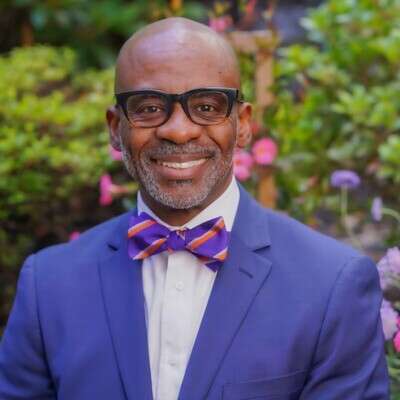Our discussion with Ray Pisani, President & CEO of Alberta Blue Cross on leadership, motivation, and the value of diversity.
Alberta Blue Cross, President and CEO, Ray Pisani is a leader dedicated to purposeful alignment of talent and strategic vision. Under his leadership, the organization has been repeatedly recognized for its best practices, being named to Alberta's Top 70 Employers for the 10th consecutive year and earning the distinction as Canada's Top Employers for Young People and as one of Canada’s Top 100 Brands. With a leadership style based on continuous learning and curiosity, Ray embraces the all-encompassing definition of diversity as a critical driver of organizational success. He also serves on several industry-leading boards with initiative and vision.
Boyden’s Kevin Gregor and Kathryn Young sat down with Ray to talk leadership, motivation, and the value of diversity.
BOYDEN: You recently stated that Alberta Blue Cross is aggressively adopting technology to deliver an unparalleled customer experience. How is your vision being realized?
PISANI: You start to consider legacy in the sense of what you want to leave behind and how you direct the organization to achieve it. I envisioned our organization to be the leading benefits carrier in Alberta, and in order to do that, we needed to go through a very purposeful, strategic plan to get us there. But the most critical step is ensuring we have a team that is set up for success. So, we focused on aligning our people, structure and strategy. We took a close look to ensure that the organization was capable from a structural perspective, as it was essential that we had the skill sets, talent and culture to achieve our objectives.
BOYDEN: Your path to CEO is a unique one, following 30 years of progression within the organization. How has your career path shaped your leadership style?
PISANI: Coming in from the front-line level and working my way up, I had an opportunity to interact with people across the organization from the start. That has not changed today, and I strongly feel this interaction is critical; otherwise you risk losing the pulse of the organization and where you need to go. My definition of team includes our board all the way to our front-line staff. This has shaped my perspective and understanding that I can learn from anybody by listening and asking questions. Sometimes I think I drive them a little crazy, but that’s because I am curious and I’m hoping that they ask a lot of questions back to drive the spirit of continuous learning.
BOYDEN: From your observations, what does diversity look like today within the insurance sector and do you see any acceleration?
PISANI: The insurance industry is generally doing a better job today, but there is a long way to go. There’s not enough diversity in senior-level positions, across executive teams, or on boards. As we grow, our teams need to reflect the diversity of our society. This will allow our organizations to succeed at higher levels, as we’ll see more diverse products and services to meet the needs of more diverse customers.
One observation is approach and mindset. If organizations approach diversity as something that needs to be done because there is a quota or it’s on trend, they are going to fail. It must come from the mindset that diversity and inclusion are critically important to the organization to ensure that it meets the needs of its customer base. That mindset will attract talented people to the table, and that is the most critical and important aspect that boards and executive teams should consider.
BOYDEN: How do you build diversity into the succession strategy? Should it be purposeful?
PISANI: Yes, absolutely. Boards might focus primarily on the succession of the CEO, which is important, but it’s not the be-all and end-all. A solid board and CEO will look at succession by exploring the executive, senior management and mid-management levels. The key here is to understand the role that a succession plan plays in the organizational strategy, and to get a full picture of the skill sets and diverse makeup of the team you are building. You then start to prepare those individuals for the future.
BOYDEN: What do you see as the tangible benefits of having a more diverse leadership team?
PISANI: You can add tremendous value to the services and products that are going to hit the market by meeting the needs of your customers. You do so by aligning the diversity across society within your organization, across all levels. It is important to note that while gender balance is a part of that, to build a truly diverse team means you encompass all aspects, beyond gender.
BOYDEN: One aspect of diversity that is not often spoken about is diversity of thought. Sometimes leaders want to surround themselves with people who think just like them. Can you comment on how to build a culture that encourages diversity of thought?
PISANI: That’s a great point. Right or wrong, I don’t want to be the smartest person in the room on any subject. Diversity of thought ensures that there is a different lens and a difference of opinions. My job is to also ensure those opinions are expressed freely without repercussion. This cultivates an open dialogue and you are now less at risk of a decision being anchored to a more strongly-voiced opinion.
BOYDEN: Given your unique lens, what role does the board play in helping to support or grow a thoughtful dialogue on diversity?
PISANI: First and foremost is to articulate the corporation’s policy on diversity and inclusion. And then the question that you ask is how you live it and walk the talk. One way is to ensure diversity is on board and management agendas. There’s a lot of other diversity challenges within organizations that can be achieved through these means, especially when the definition of diversity goes beyond the gender lens.
BOYDEN: Considering age as a diversity factor that boards are now considering, what is the trade-off from age and experience to bringing a different viewpoint?
PISANI: Age is an interesting question when it comes to board diversity, and I think some organizations firmly believe that they should have someone within a certain age band in order to reflect that demographic. That hasn’t been my approach, as I’m not sure the effectiveness is there. At the board level you need experience in governance and you need to understand oversight of policy and strategy. While learning about a specific age demographic can be valuable, it can be accomplished in other ways.
BOYDEN: What advice would you give someone striving to lead?
PISANI: A really important element of leadership is to elevate those around you. By helping people achieve their potential and nurturing their talent, you will be a natural leader. I had mentors that helped me do that and it has in turn helped me understand the value in it.
About the series:
Talent Talks with Women in Governance & Boyden is a feature series highlighting leadership, talent, and diversity discussions with top leaders of today. The series focuses on topics and themes with a purpose to inspire women and our diverse community to lead. Talent Talks also appears on Women in Governance website.
The series is part of #DisruptTheNorm, a Boyden-driven campaign to accelerate diversity in leadership. We envision a world where the CEO and its image is not defined by gender, background or ethnicity, but by success. It is a call to action and acknowledgment that we all are contributors to the solution
About Women in Governance / La Gouvernance au Féminin is a not-for-profit organization supporting women in leadership development, career advancement and board governance. Founded by Caroline Codsi in 2010, the organization focuses on impactful initiatives towards closing the leadership diversity gap, ensuring women and men work together as ambassadors for the cause.
Follow Women in Governance: Twitter | Facebook | www.womeningovernance.org





